Scorpion Flies, Hanging Flies - Order Mecoptera
This page contains pictures and information about Scorpion Flies and Hanging Flies that we found in the Brisbane area, Queensland, Australia.
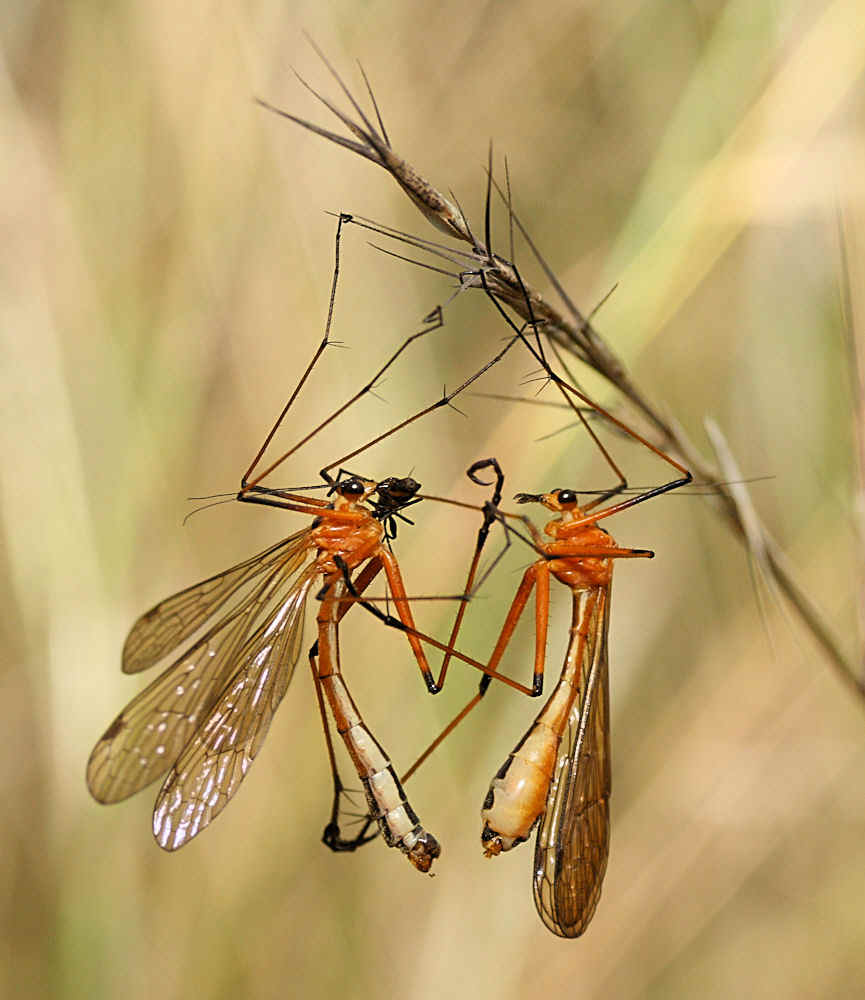
- With a prey, the male Scorpion Fly won the female attention. Photo thank to Trevor Jinks
- Order Mecoptera is a small order. They are commonly called Scorpion Flies and Hanging Flies.
- Scorpion flies look similar to true flies (order Diptera), however, they have two pair of wings which are similar in size and shape.. True files only have one pair of wings. For some species, their males have the end of the abdomen curved and held forward, very much like that of a scorpion's sting, so their name Scorpion fly.

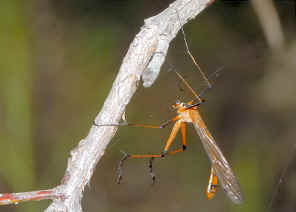
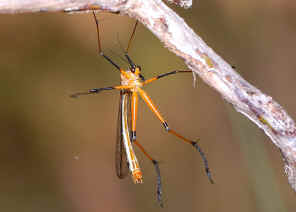
- Scorpion flies in family Bittacidae do not look like Scorpion. They are known as Hanging Flies. They are predatory insects. When waiting for prey, they hang from plants by their front legs with the other legs positioned ready to catch any prey insect that passes by. Their legs, especially the tarsi, are unusually long and slender. At the tip of each leg there is a single opposable claw. They are the only insect to use this method to capture prey.
- They are very conspicuous on the plants and not
easily noticed by other insects. They have their strong hind legs to catch
prey. Also notice their long beak. Hanging Flies can often be seen hanging from low vegetation
waiting for a chance to capture passing prey with their hind legs. When disturbed, they fly away slowly.
- Male Hanging Flies attract females with pheromones and offer them with captured prey as nuptial gifts before mating. Male Hanging Flies can also be seen hanging from low vegetation, holding a prey and waiting for females.
- Their larvae look like caterpillars. Some species larvae have hairy warts and camouflage themselves by sticking leaves on their bodies. They live in loose soil or debris, some species are predatory, some feed on dead animal or plant material. They pupate in soil.
- Hanging Flies are common in eucalypt forests in Brisbane. They are mostly seen during late afternoon hanging near the top of short plants.
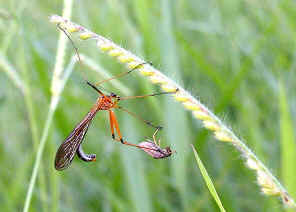
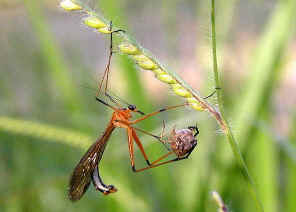
- Harpobittacus tillyardi, family Bittacidae, body length 30mm
- We took the above adult picture in Karawatha Forest during mid summer afternoon. The Scorpion Fly had captured a small stink bug. This could be a Male Hanging Flies holding a prey and waiting for females.
Scorpion Fly Captured a Bee
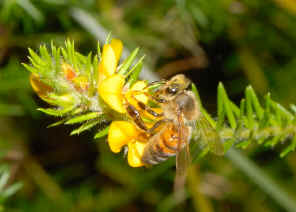
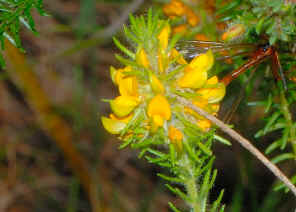
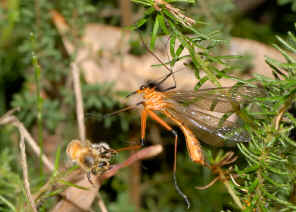
- On Sep 2009 in Carbrook Wetland, when the Phyllota phylicoides plants were flowering, there were many honey bees visiting the yellow flowers. We noticed there was a Hanging Fly hiding near the top of one short plant. It was hanging with the first pair of legs holding the plant. When a bee flied very close to it, it grabbed the bee with one of its last pair of legs.
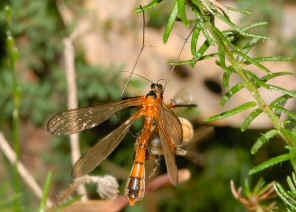
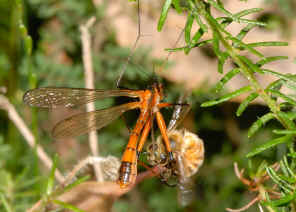
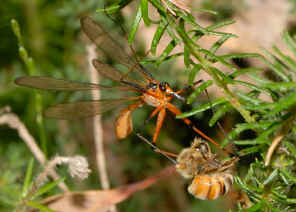
- For the Hanging Fly, its last pair of legs have the very long tarsi and a single opposable claw. The Hanging Fly grabbed the bee with its tarsi around the bee's body. The bee struggled for a short while but no way to escape.
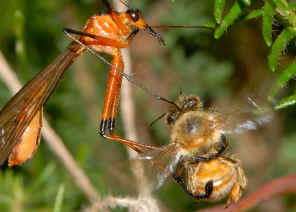
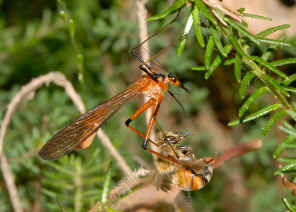
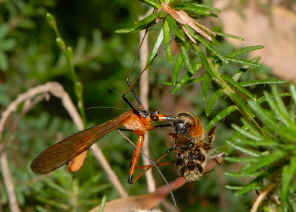
- The Hanging Fly manipulated the bee with its last two pair of legs, with front pair of legs still holding the plant. the Hanging Fly used its long sharp beak-like mouth punched the bee's body a few times in different parts, included the back of the bee's thorax and abdomen.
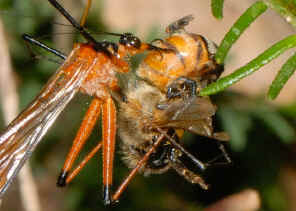
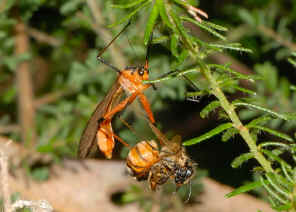
- After about half a minute, the bee stopped moving. The bee then looked wet, it could b due to the bee's body fluid and/or the digest-enzyme from the Hanging Fly.
- Reference:
- 1. A field guide to insects in Australia - By Paul Zborowski and Ross Storey, Reed New Holland, 1996, p132.
